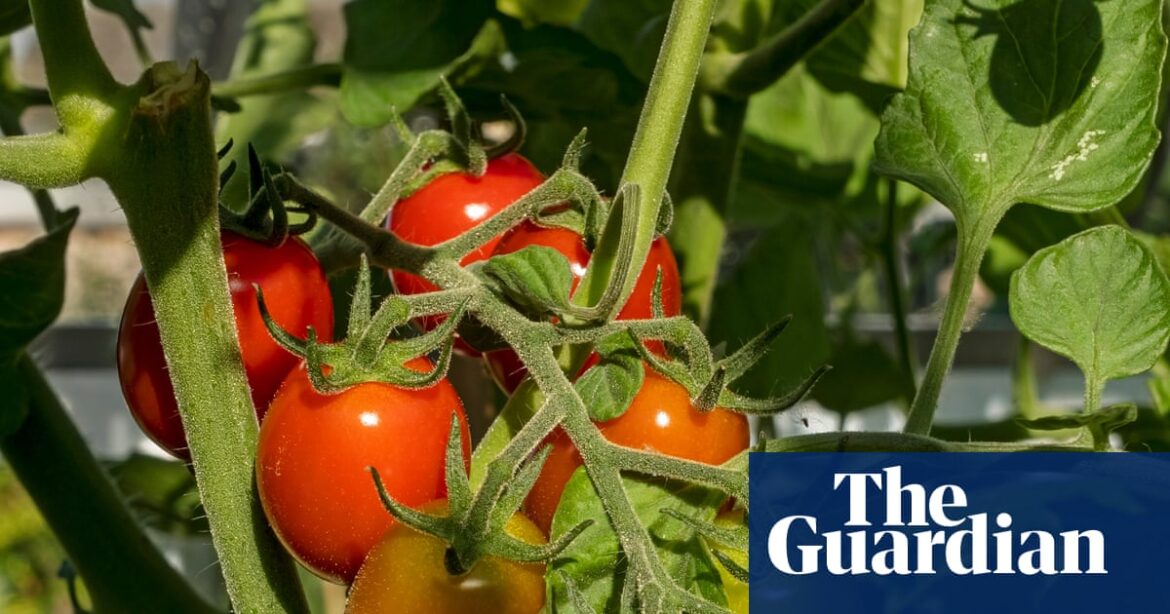I’ve been as honest as possible about the rubbish growing season I’ve had this year. For reasons beyond my control – mostly life, work and weather – it’s been far from my best. I’ve hobbled along, trying to keep my cool when my trays of seed have barely germinated and while attempting to rescue root-bound plants that I’d somehow forgotten about. I’ve come to the realisation that it’s fine to have an off year as long as you embrace it. As the saying – often attributed to Buddha – goes, pain is inevitable but suffering is optional.
For me, that’s meant welcoming as many “volunteer plants” as I have space for. The term is often used as a kind synonym for weeds, but I use it to mean plants growing where I hadn’t planned for them to be. And given that I mulch with compost made from my garden waste and kitchen scraps, and leave my crops to flower and self-seed, unexpected plants always pop up.
My most plentiful volunteer plant this year has been the tomato. They’re easy to identify as they emerge with their purple-hued, fuzzy stems, and although most grew into scrawny plants, they did yield enough cherry tomatoes to justify their presence.
skip past newsletter promotion
Sign up to Inside Saturday
The only way to get a look behind the scenes of the Saturday magazine. Sign up to get the inside story from our top writers as well as all the must-read articles and columns, delivered to your inbox every weekend.
Privacy Notice: Newsletters may contain information about charities, online ads, and content funded by outside parties. If you do not have an account, we will create a guest account for you on theguardian.com to send you this newsletter. You can complete full registration at any time. For more information about how we use your data see our Privacy Policy. We use Google reCaptcha to protect our website and the Google Privacy Policy and Terms of Service apply.
after newsletter promotion
By letting things be and embracing ‘what is’, the garden has played host to species I haven’t seen before, including grasshoppers, a gilded slow worm and ground bees
A good number of squash plants popped up around the veg patch, too. The past me would have weeded them out immediately given that, as monoecious plants (having both male and female sex organs), they’re liable to cross-pollination, which results in bitter, unpleasantly textured or unusually shaped – and in very rare instances toxic – fruit. But I decided to let these ones grow as their flowers were a welcome addition for the pollinators and likely meant a better chance of successful pollination – and thus, fruit – on the squash plants I’d grown intentionally.
The most welcome plants appearing around the veg beds have been the raspberry canes. These are the next generation of the raspberries I planted three years ago, which have spread their roots so far they’ve left the perennial bed where they first grew. They’re a mixture of summer and autumn fruiting varieties, so some bore fruit this year, and I’m planning to move the rest – as they ought to bear fruit next year – into the freshly weeded and mulched raspberry bed, repopulating that piece of ground before it freezes.
It’s been an unconventional approach to keeping my veg patch filled with life, but by letting things be and embracing “what is”, the garden has played host to various species I haven’t seen here before, including a cacophony of grasshoppers, a stunningly gilded slow worm and a nest of ground bees that made their home amid a patch of marjoram. Not bad for season marked by failure.


Comments are closed.